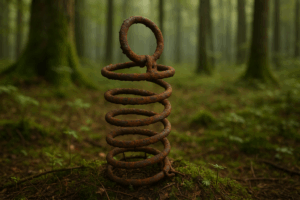Chesterfield Wiki
Official wiki of Chesterfield information
When investing in a Chesterfield sofa, understanding its internal construction is crucial for assessing both comfort and longevity. The presence and quality of seat springs play a pivotal role in the sofa’s performance, directly impacting how it feels and how long it lasts. This guide will demystify the spring systems used in Chesterfield sofas, helping you make an informed purchase and avoid common pitfalls that lead to premature sagging and discomfort.
Contents
The Core of Comfort: Identifying Spring Types in Chesterfield Sofas
Traditional, high-quality Chesterfield sofas do indeed feature springs in the seat, and the type used is a key differentiator. The two primary systems you’ll encounter are the eight-way hand-tied spring system and the drop-in (sinuous) spring system. The eight-way hand-tied method is the gold standard of craftsmanship, where each coil spring is individually tied eight ways with twine to neighboring springs and the frame. This creates an interconnected web of support that moves with your body and maintains its resilience for decades. Conversely, sinuous springs are pre-formed, S-shaped wires that are fastened to the frame, offering a firm and durable support system that is common in many modern furniture pieces.
Actionable Spring Assessment
- Ask the Manufacturer: Always inquire directly about the spring system. A reputable seller will be transparent about whether they use hand-tied, sinuous, or no springs at all.
- The Sit Test: Sit firmly on the sofa. A quality spring system should offer initial firmness followed by a gentle, supportive give. You should not feel any hard points or hear creaking.
- Check the Base: If possible, look underneath the sofa. A dust cover can often be temporarily removed to glimpse the spring construction, revealing the tell-tale knots of a hand-tied system or the waves of a sinuous one.
Common Mistakes in Assessing Chesterfield Sofa Springs
Many buyers focus solely on the exterior leather or velvet, overlooking the internal framework that dictates long-term comfort. A critical error is assuming all Chesterfields are built the same. Some modern or budget-friendly versions may use a webbed or solid platform base with high-density foam instead of springs, which can lead to a firmer, less responsive seat that may compress over time. Another common mistake is judging the sofa’s quality by its price tag alone without verifying the construction details. A low price often signals a compromise on internal materials like the spring system and frame wood.
Pitfalls to Avoid
- Ignoring Construction Details: Never buy based on looks alone. Insist on knowing the specifics of the seat base construction.
- Confusing Cushioning for Support: Deep, plush cushioning can mask a poor underlying support system. Assess the base support separately from the top comfort layers.
- Overlooking Frame Material: The springs are only as good as the frame they’re attached to. A softwood frame may not securely hold spring fastenings over the long term compared to kiln-dried hardwood.
How to Spot Quality Spring Construction
Identifying a well-constructed Chesterfield sofa goes beyond a simple label. For spring-based seats, longevity is determined by the materials and craftsmanship. High-carbon steel springs are essential for resisting rust and maintaining tension. In a hand-tied system, look for evidence of skilled craftsmanship—the knots should be tight and uniform, and the springs should be closely set. The sofa should feel substantial and heavy, indicating a solid hardwood frame that can withstand the constant tension of the springs. A lightweight sofa often suggests inferior materials that are prone to shifting or breaking.
Signs of Superior Craftsmanship
- Substantial Weight: A quality Chesterfield with a hardwood frame and spring system will be notably heavy.
- Lifetime Guarantees: Manufacturers confident in their spring systems often back them with extensive warranties.
- Even Settling: When you press down on the seat, it should compress evenly without any noticeable dips or unevenness, indicating a balanced spring system.
Conclusion
- Verify the System: Always confirm the type of spring system used—hand-tied for superior longevity and comfort, or sinuous for firm support.
- Look Beyond the Surface: The upholstery is important, but the internal spring and frame construction are what ensure decades of reliable use.
- Test and Inquire: Perform a physical sit test and ask the retailer detailed questions about the materials and build quality.
- Invest in Craftsmanship: Opting for a sofa with a proven spring system and hardwood frame is a long-term investment in comfort and durability, avoiding the need for premature replacement.
Read more at https://chesterfielddeals.com/category/chesterfield/do-chesterfield-sofas-have-springs-in-the-seat/
A Comprehensive Guide to Choosing Your Perfect Chesterfield
Essential Tips for Maintaining Your Leather Chesterfield Sofa
Styling Your Chesterfield Sofa in a Contemporary Living Room
The Rich History of the Chesterfield Sofa

